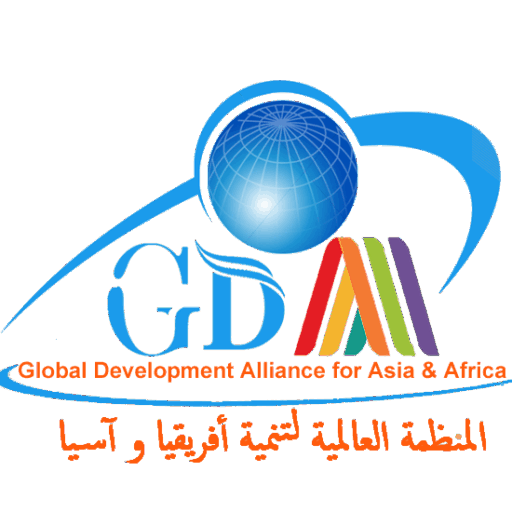Why Asia & Africa
The Global Development Alliance for Asia & Africa (GDAAA) has made a strategic decision to focus (but not exclusively) its actions on Asia and Africa for several fundamental reasons related to the importance of these regions in the global context of sustainable development. These regions face specific challenges and have enormous potential to achieve the Sustainable Development Goals (SDGs) .
Indeed, while our organization focuses primarily on these two continents due to the unique challenges they face and the transformative potential they offer, this approach also allows us to expand our expertise and share our initiatives with other regions around the world. This flexibility gives us the opportunity to build strong global partnerships, foster knowledge exchange, and identify innovative solutions that can be adapted to diverse contexts.
Thus, GDAAA adopts an inclusive vision of development, aiming to strengthen international cooperation and promote comprehensive, balanced, and sustainable development. Our projects and actions are not limited to Asia and Africa, but draw on global best practices to foster lasting positive impact wherever needed.
-
Increased Development Challenges in these Regions
Asia and Africa face unique development challenges that require targeted and urgent action. These challenges include high poverty rates, economic and social inequality, limited access to quality education, inadequate health infrastructure, and major environmental challenges such as climate change. These challenges make these regions particularly vulnerable but also more receptive to sustainable development initiatives, presenting an opportunity for positive change.
-
Population Growth and Resource Needs
Asia and Africa are home to a significant portion of the world’s population, and these regions are experiencing rapid population growth rates. By 2050, approximately 40% of the world’s population will live in Africa. These regions will require increased resources to meet the education, health, employment, and housing needs of younger generations. GDAAA is positioning itself to play a key role in promoting solutions adapted to this growth dynamic by supporting education, health, and sustainable job creation initiatives.
-
The Potential for Economic Growth and Innovation
Asia and Africa are growing hotbeds of innovation and transformation. These regions are experiencing rapid progress in areas such as technological innovation, renewable energy, and infrastructure. Many African and Asian countries are investing heavily in cutting-edge technologies, startups, and the energy transition. GDAAA can leverage this potential to promote inclusive and sustainable economic growth by supporting innovation, entrepreneurship, and green industrialization.
-
Access to Natural Resources and the Climate Issue
Asia and Africa possess exceptional natural resource wealth, such as minerals, water, arable land, and renewable energy. However, these regions are also the most exposed to the impacts of climate change. GDAAA is firmly committed to combating climate change by supporting reforestation, sustainable resource management, and climate change adaptation projects. The goal is to protect these precious resources while ensuring their sustainable use for future generations.
-
The Opportunity for Multilateral Collaborations and Partnerships
Asia and Africa are regions undergoing geopolitical and economic transformation, with a growing number of multilateral collaborative initiatives. By focusing our efforts on these regions, GDAAA has the opportunity to engage in partnerships with governments, NGOs, international organizations, businesses, and local communities to work together to achieve the SDGs . These partnerships help maximize the impact of our actions, improve coordination among development actors, and strengthen international solidarity networks.
-
Alignment with the Sustainable Development Goals (SDGs)
The Asia and Africa regions are central to the United Nations Sustainable Development Goals (SDGs ). By focusing our efforts on these regions, GDAAA directly contributes to key goals, including:
- SDG 3 (Health and well-being),
- SDG 4 (Quality Education),
- SDG 7 (Affordable and Clean Energy),
- SDG 8 (Decent work and economic growth),
- SDG 13 (Fight against climate change).
These regions are therefore at the centre of our actions because of the seriousness of the challenges they face and the significant impact that targeted initiatives can have.
-
Strengthening Local Capacities for Autonomous and Sustainable Development
One of GDAAA’s main objectives is to strengthen local capacity in these regions to create sustainable solutions that do not rely solely on external aid. In Asia and Africa, GDAAA implements training, skills transfer, and local entrepreneurship support programs to enable communities to develop solutions adapted to their specific needs and local realities.
-
Promote an Inclusive and Participatory Approach
Finally, GDAAA focuses on an inclusive and participatory approach, involving local communities, youth, women, and vulnerable groups in decision-making and project implementation. This approach ensures that sustainable development benefits not just a few, but everyone, especially the most marginalized populations in Asia and Africa.
Conclusion
In summary, GDAAA has chosen to focus its actions on Asia and Africa because of the unique challenges these regions face and their transformative potential. By aligning its initiatives with the Sustainable Development Goals , GDAAA strives to address urgent needs while promoting sustainable and inclusive solutions for a prosperous future. This strategic approach aims to have a significant and lasting impact on the populations of these regions, while promoting development that respects the environment and humanity.
